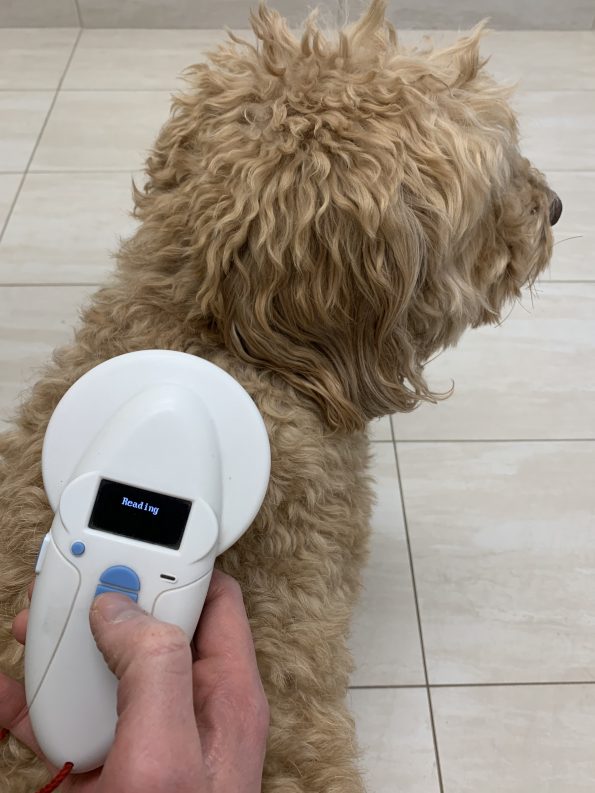
Microchipping is a simple and effective way of identifying your pet. In the event your pet goes missing, the microchip is the go-to way of finding your information.
There are a few misconceptions about microchips that we hope to clear up here.
How do microchips work?
Microchips are small chips, about the size of a grain of rice, which are implanted under the skin between the shoulder blades of companion animals. The chip contains a unique number that can be read by a microchip scanner waved over the site. The unique number is linked in a microchip registry to the pet owner’s name, phone number and other contact information.
Virtually all veterinary hospitals and pet shelters/pounds will have a microchip scanner. Any person who has found a pet will typically bring the animal to a veterinary hospital or shelter where the pet will be scanned. If a microchip is found, the pet’s owner will be contacted immediately.
How are microchips implanted?
Microchips are preloaded inside a needle. The needle is injected under the skin and a stylet inside the needle pushes the microchip out of the needle, depositing it permanently under the skin. This is a simple procedure that can be completed in less than five minutes. No sedation or anesthesia is needed and most pets tolerate the injection very well.
What are the costs of a microchip implant?
Microchip implants vary in cost but in general can be implanted for a relatively nominal fee. The registration is typically free but note that some microchip registries charge an annual fee. Be sure to ask where your pet’s microchip is registered and whether there are any ongoing fees beyond the implant itself.
Can I track my pet’s location with a microchip?
No. Microchips do not have GPS tracking ability.
What else should I know about microchips?
- Microchip registry information must be kept up to date. If a pet owner moves or changes their phone number, they must remember to contact the registry and provide their new information.
- Microchips are not perfect and sometimes stop registering a number when scanned. It is best to periodically have your pet’s microchip scanned to ensure it is still working.
- Microchips are required for air travel to many countries around the world. If you plan on international travel with your pet, be sure an international chip is implanted. It is also crucial that pets travelling internationally have their microchip placed prior to rabies vaccination, as rabies vaccines administered prior to the microchip placement will not be recognized by the authorities.
Please contact us if you have any additional questions about microchips, or would like to arrange microchipping for your pet!



